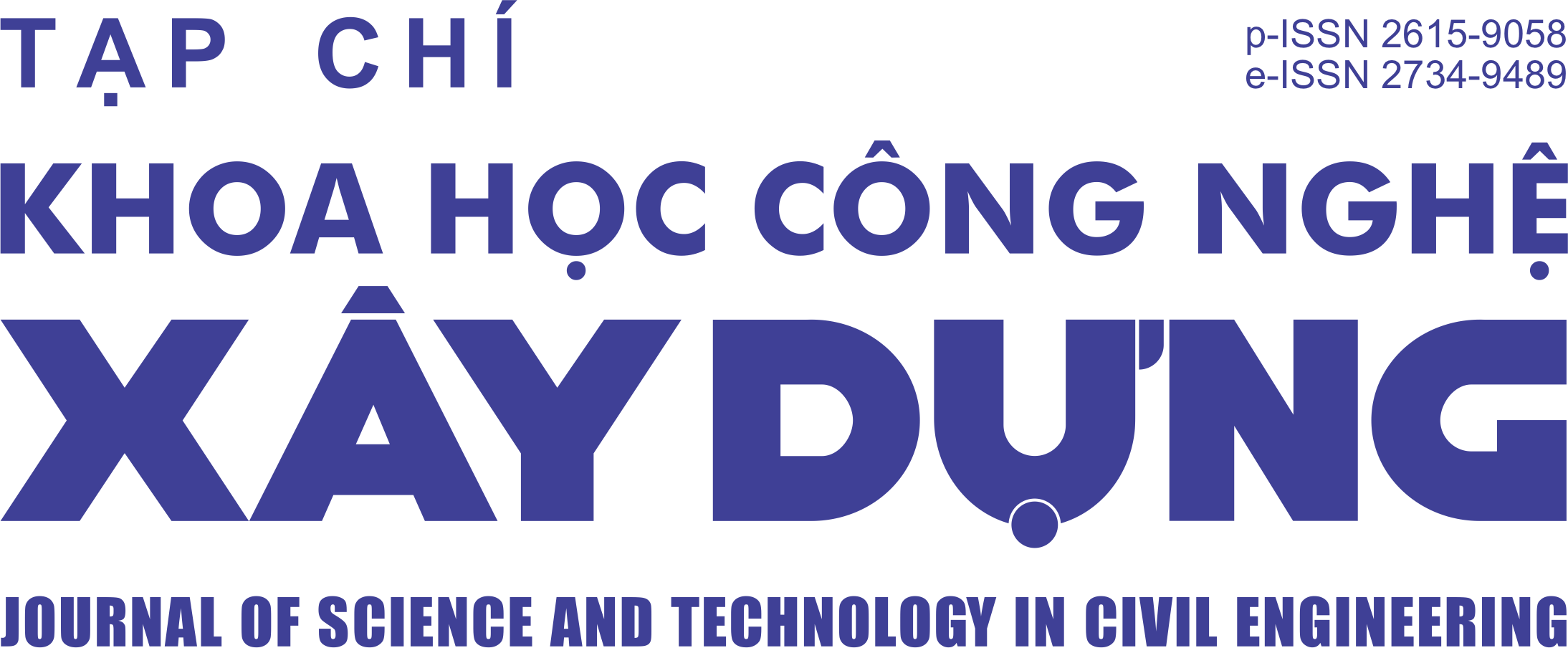PILOT MONITORING OF ULTRAFINE PARTICLE NUMBER CONCENTRATIONS IN SOME HIGH RISE APARTMENTS IN HANOI
Abstract
Epidemiological studies have consistently shown that fine and course airborne particles (PM2.5 and PM10), as well as ultrafine (UF) particles measured in terms of particle number (PN) concentrations, are toxic to human health. A number of studies on particle concentrations in households were conducted worldwide; however, no such studies have so far been conducted in Vietnam. Using two Nano-Tracers, the authors have simultaneously and continuously measured both indoor and outdoor number concentrations of UF particles at two high rise apartments in Hanoi in order to quantify the concentrations and initially develop an understanding of factors driving them. Daily average indoor and outdoor PN concentrations ranged from 12.9 to 19.8 x 103 p/cm3 and from 21.3 to 35.5 x 103 p/cm3, respectively. However, mean concentrations of indoor and outdoor PN during rush-hours were higher and increased up to the maximum of 24.0 and to 57.8 x 103 p/cm3, respectively. Inspection of time series of particle concentration and subsequent statistic analysis showed that outdoor PN concentrations were strongly influenced by the outdoor vehicle emissions, while indoor PN concentrations were contributed by both indoor and outdoor sources. It is the first time, UF particle number concentrations outside and inside the high rise apartments in Hanoi were quantified.
Keywords: Ultrafine particle; high rise apartment; traffic; indoor activities.
Received: August 22th, 2016, revised: September 5th, 2016, accepted: October 13th, 2016
Downloads
1. The Author assigns all copyright in and to the article (the Work) to the Journal of Science and Technology in Civil Engineering (JSTCE) – Hanoi University of Civil Engineering (HUCE), including the right to publish, republish, transmit, sell and distribute the Work in whole or in part in electronic and print editions of the Journal, in all media of expression now known or later developed.
2. By this assignment of copyright to the JSTCE, reproduction, posting, transmission, distribution or other use of the Work in whole or in part in any medium by the Author requires a full citation to the Journal, suitable in form and content as follows: title of article, authors’ names, journal title, volume, issue, year, copyright owner as specified in the Journal, DOI number. Links to the final article published on the website of the Journal are encouraged.
3. The Author and the company/employer agree that any and all copies of the final published version of the Work or any part thereof distributed or posted by them in print or electronic format as permitted herein will include the notice of copyright as stipulated in the Journal and a full citation to the Journal as published on the website.







